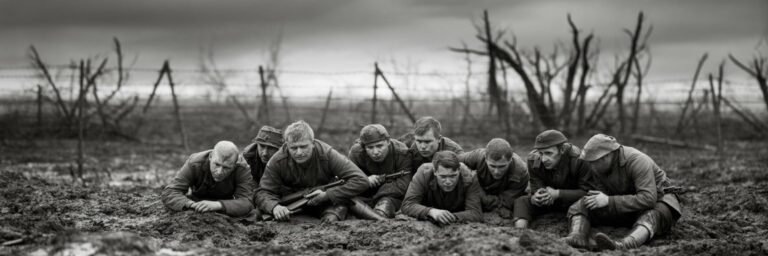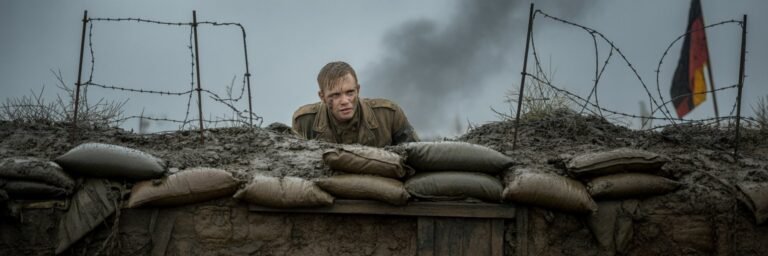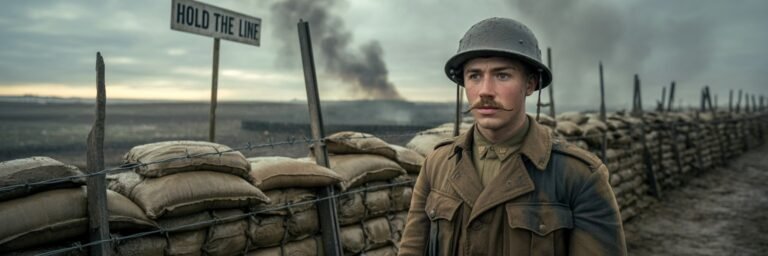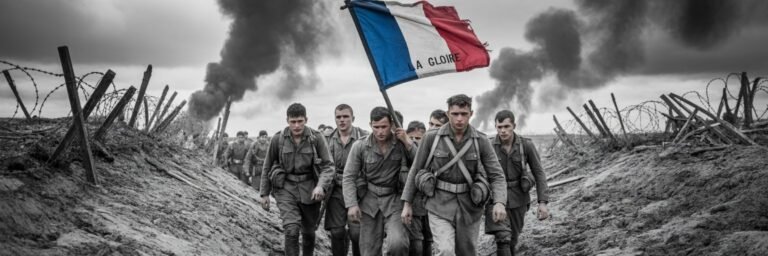World War I (1914–1918) was a brutal conflict that introduced the world to the horrors of trench warfare. The Western Front, stretching from the North Sea to Switzerland, became a network of muddy, rat-infested trenches where soldiers endured some of the harshest conditions in military history. Trench warfare turned the war into a grueling battle of attrition, where death and survival often depended on inches of ground gained or lost.
This article explores the construction, daily life, dangers, and psychological effects of trench warfare, shedding light on what it was truly like for the soldiers who lived and died in the trenches.
1. The Creation of the Trenches
Why Were Trenches Built?
At the start of World War I, military leaders expected a war of movement—fast offensives and decisive battles. However, with the development of machine guns, artillery, and barbed wire, advancing armies suffered heavy casualties. By late 1914, both sides began digging in to protect themselves from enemy fire, leading to the creation of an extensive trench network.
Structure of the Trenches
The trenches were not simple holes in the ground but complex defensive systems:
- Frontline Trenches – The first line of defense, closest to the enemy.
- Support Trenches – Provided reinforcements and supplies.
- Reserve Trenches – Housed troops waiting to replace frontline soldiers.
- Communication Trenches – Connected different parts of the network, allowing for movement of troops and messages.
Trenches were often zigzagged instead of straight, preventing enemies from firing down their entire length if breached.
2. Daily Life in the Trenches
Life in the trenches was defined by monotony, hardship, and the constant threat of death. Soldiers endured long periods of boredom punctuated by terrifying bursts of combat.
Food and Rations
Meals were often scarce and repetitive. A typical ration included:
- Bully beef (canned corned beef)
- Hard biscuits (often infested with weevils)
- Stale bread and pea soup
- Tea and watered-down rum
Fresh food was rare, and water had to be purified with chlorine tablets due to contamination.
Hygiene and Disease
Poor sanitation made disease a constant threat:
- Trench Foot – Caused by prolonged exposure to wet, unsanitary conditions, leading to gangrene and amputations.
- Lice Infestations – Soldiers were covered in lice, which spread trench fever, a disease causing severe pain and fever.
- Dysentery – Caused by drinking contaminated water, leading to severe diarrhea and dehydration.
The Dangers of Trench Warfare
- Snipers – Enemy snipers targeted anyone who lifted their head above the trench.
- Artillery Shelling – Constant bombardments could bury soldiers alive in collapsed trenches.
- Gas Attacks – Mustard and chlorine gas attacks inflicted excruciating burns, blindness, and suffocation.
- Rats and Corpses – The trenches were overrun with giant rats feeding on dead bodies, adding to the horrors of trench life.
3. The Psychological Toll: Shell Shock and Despair
Trench warfare was as much a mental battle as a physical one. Soldiers suffered from extreme psychological trauma, known as “shell shock” (now recognized as PTSD).
Causes of Shell Shock
- Relentless artillery bombardment created unbearable stress.
- Living among death—watching friends and comrades die daily.
- Lack of sleep due to night-time raids and constant fear.
Some soldiers became catatonic, mute, or emotionally numb, while others suffered from uncontrollable shaking and night terrors.
4. The Horror of No Man’s Land
Between opposing trenches lay No Man’s Land, a barren, corpse-strewn wasteland covered in barbed wire, shell craters, and landmines. Soldiers who attempted to cross during an attack faced:
- Machine gun fire, cutting down entire units in minutes.
- Artillery barrages, obliterating anything that moved.
- Barbed wire entanglements, trapping soldiers under enemy fire.
The famous Battle of the Somme (1916) saw over 57,000 British casualties on the first day alone, largely due to failed assaults across No Man’s Land.
5. Trench Raids and the Brutality of Close Combat
Occasionally, soldiers would launch nighttime trench raids, sneaking into enemy trenches to gather intelligence or kill unsuspecting soldiers. These raids were brutal, involving hand-to-hand combat with bayonets, clubs, and knives.
Weapons commonly used in trench combat included:
- Bayonets – Fixed on rifles for stabbing enemies.
- Trench Knives – Short, sharp blades for silent kills.
- Clubs and Spiked Maces – Crude but effective in close quarters.
- Flamethrowers – Used to burn enemy trenches, creating horrific casualties.
6. The End of Trench Warfare
Why Did Trench Warfare End?
By 1918, advances in tanks, aircraft, and new tactics helped break the stalemate:
- Tanks – Armored vehicles like the British Mark V tank could cross trenches and barbed wire.
- Stormtrooper Tactics – The German army developed small, fast-moving assault units to infiltrate enemy lines.
- Artillery Barrages and Creeping Barrages – Precision artillery bombardments allowed for more effective offensives.
The Allied Hundred Days Offensive (1918) marked the final phase of the war, pushing German forces back and leading to the Armistice on November 11, 1918.
7. The Legacy of the Trenches
What Did We Learn from Trench Warfare?
Trench warfare changed the way wars were fought, influencing military strategy for future conflicts.
- The horrors of trench life led to better treatment of soldiers in later wars.
- Advancements in medical care improved battlefield medicine.
- Lessons from failed offensives influenced tactics in World War II and beyond.
Remembering the Soldiers of the Trenches
Millions of men lived and died in the trenches, enduring unimaginable hardship. The war poets, such as Wilfred Owen and Siegfried Sassoon, captured the reality of trench life in haunting poetry that still resonates today.
A War Fought in the Mud
The trenches of World War I were more than just battlefields—they were living hells where men faced constant danger, disease, and psychological torment. Despite the horrors, the soldiers who fought and died in the trenches showed unparalleled resilience and bravery.
Understanding trench warfare helps us appreciate the sacrifices of those who endured it and serves as a reminder of the devastation of war. The lessons learned from the trenches continue to shape military tactics and historical memory, ensuring that the experiences of World War I’s soldiers are never forgotten.






